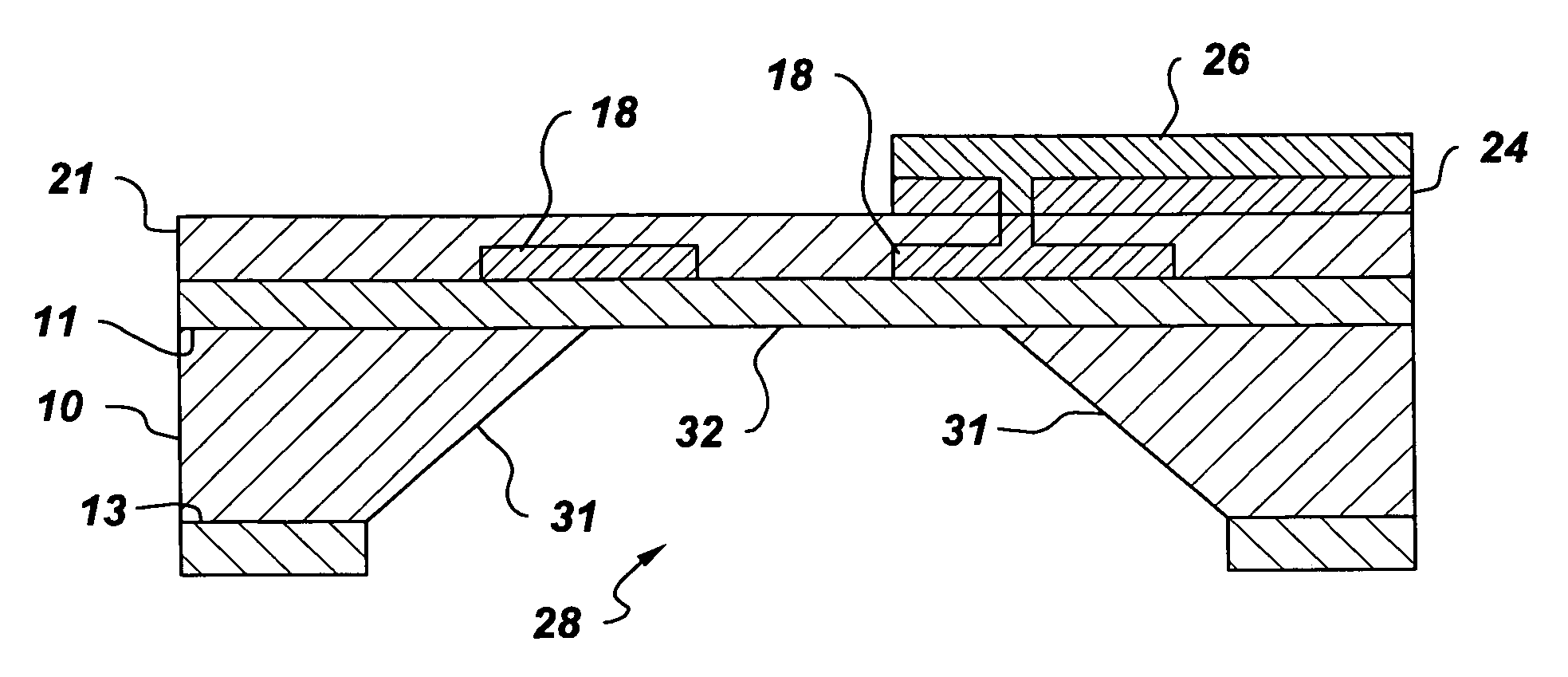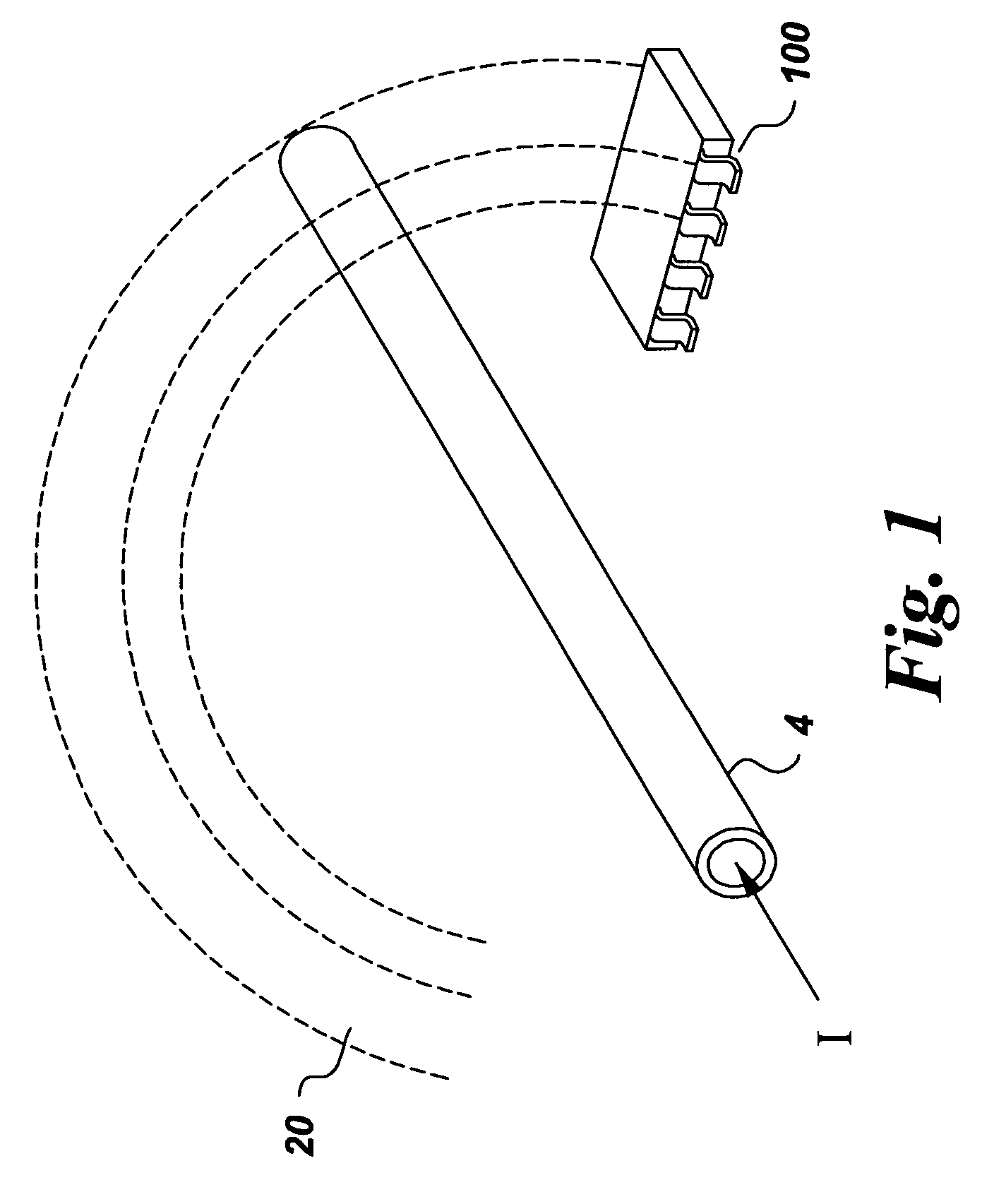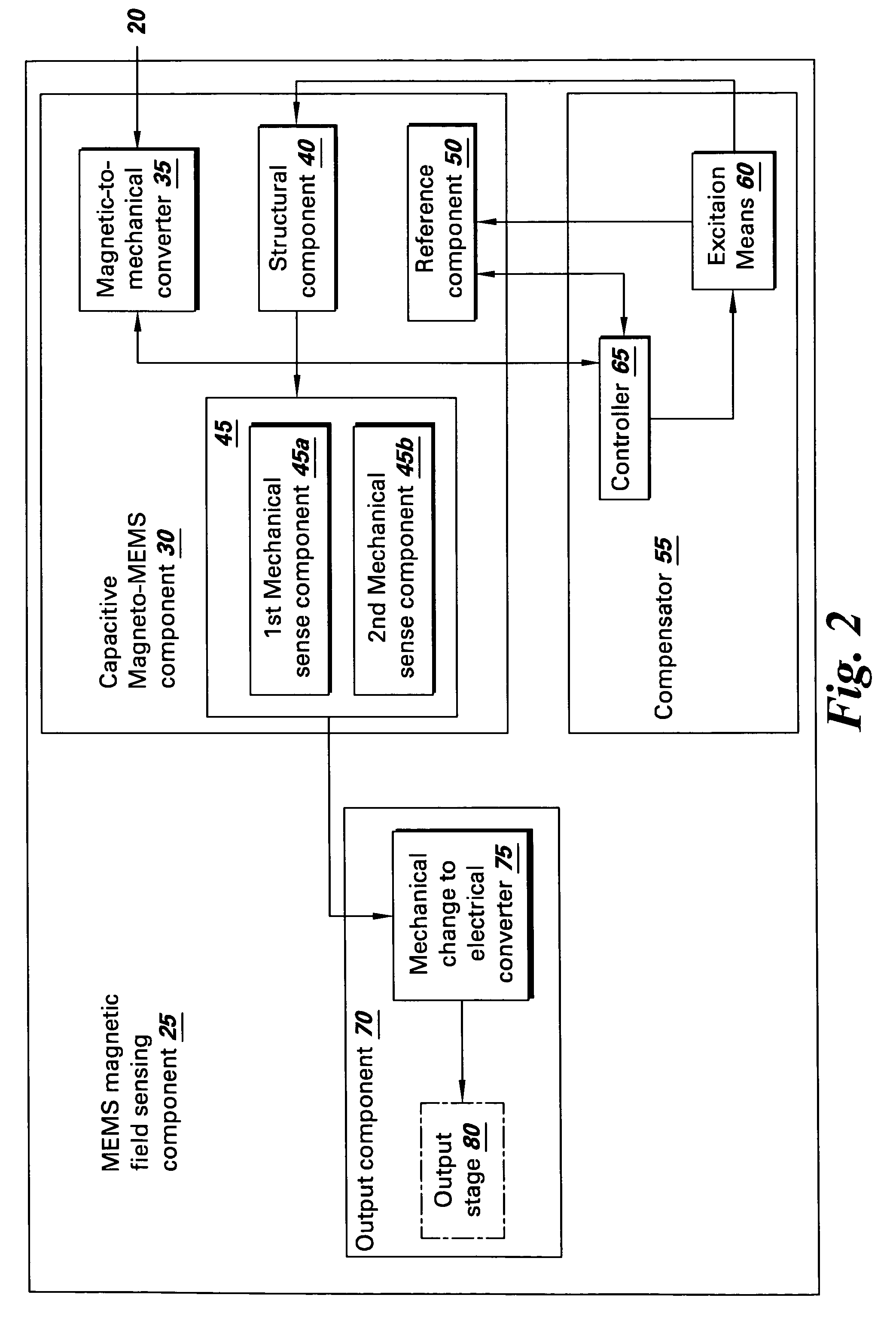Micro-electromechanical system (MEMS) based current and magnetic field sensor having capacitive sense components
a micro-electromechanical system and sensor technology, applied in the direction of instruments, base element modifications, measurement using dc-ac conversion, etc., can solve the problems of reducing the efficiency of current sensors, affecting the accuracy of sensors, and affecting the use of sensors in smaller scale environments
- Summary
- Abstract
- Description
- Claims
- Application Information
AI Technical Summary
Benefits of technology
Problems solved by technology
Method used
Image
Examples
Embodiment Construction
[0019]FIG. 1 illustrates one embodiment of a MEMS current and magnetic field sensing device described herein and hereinafter generally referred to as “current sensor 100”. As shown, conductor 4 carrying a current I generates a magnetic field 20. In accordance with one embodiment of the present disclosure, current sensor 100 can be used to sense the current I in a current carrying conductor 4, without having to make physical contact with the current carrying conductor. In accordance with the illustrated embodiment, the MEMS-based current sensor 100 operates to sense and determine the current I carried by the conductor 4 by making use of the Lorentz force resulting when current sensor 100 is positioned in the magnetic field 20 generated by current I. In one embodiment, the current sensor 100 includes a magnetic field sensing component having a capacitive magneto-MEMS component for sensing magnetic fields and for providing, in response thereto, an indication of the current present in t...
PUM
 Login to View More
Login to View More Abstract
Description
Claims
Application Information
 Login to View More
Login to View More - R&D
- Intellectual Property
- Life Sciences
- Materials
- Tech Scout
- Unparalleled Data Quality
- Higher Quality Content
- 60% Fewer Hallucinations
Browse by: Latest US Patents, China's latest patents, Technical Efficacy Thesaurus, Application Domain, Technology Topic, Popular Technical Reports.
© 2025 PatSnap. All rights reserved.Legal|Privacy policy|Modern Slavery Act Transparency Statement|Sitemap|About US| Contact US: help@patsnap.com



